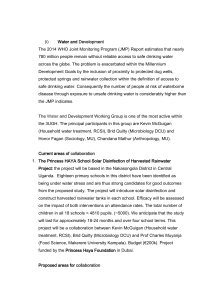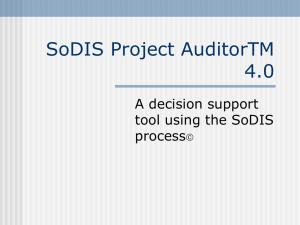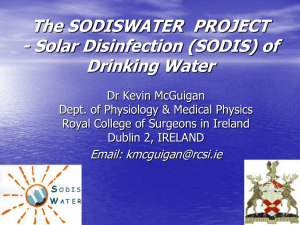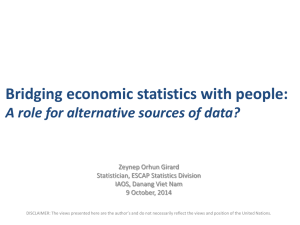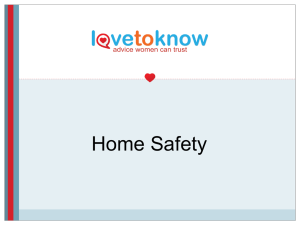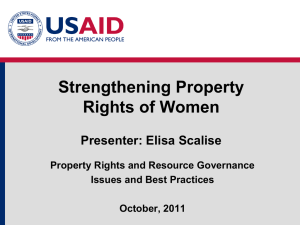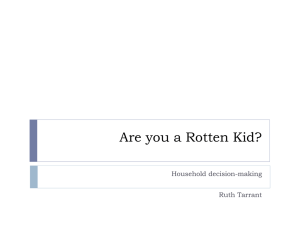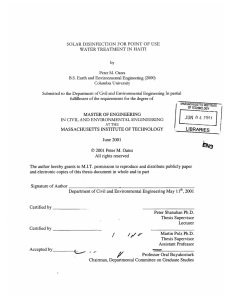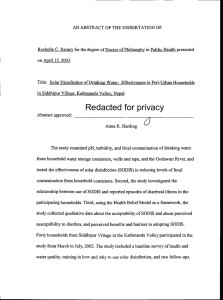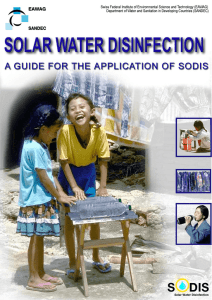SODIS Water Treatment - AGW-Net
advertisement
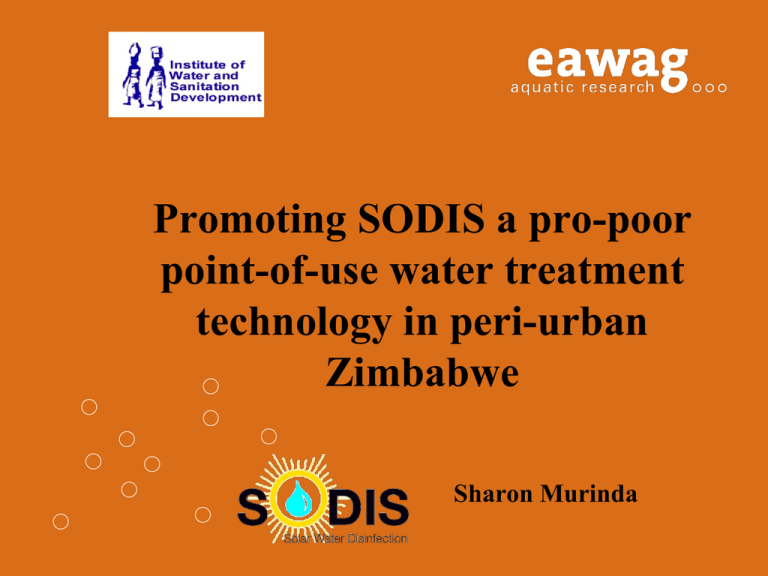
Promoting SODIS a pro-poor point-of-use water treatment technology in peri-urban Zimbabwe Sharon Murinda Background: Water 1.1 billion people lack access to improved water sources 1.8 million people die every year due to diarrheal illnesses Diarrheal illnesses due to contaminated water or improper sanitation and hygiene WHO: Millenium Development Goal: halve number of people without safe drinking water (until 2015) WHO supports SODIS as one means to reach the MDGs 2 Project areas: Baseline N = 878 interviewees 90% women Mean age 34 M = 8 years education Less than 1$ per day 4 to 5 people in 1 household 24% unemployed, 20% vendors, 11% informal traders, 17% housewives Attitude, convictions, expectations, habits 3 4 5 Solar water disinfection: SODIS 6 SODIS is… … a simple household water treatment system … point-of-use water disinfection … affordable … environmentally sustainable … socially sustainable 7 SODIS Dissemination Community Meetings Bottle Center Promotion 8 Bottle center Sources for bottles located (bottle collectors and hotels), connection arranged between them With a Token, bottle was redeemed for half-price 9 Promotion Promoters(N=43) These are respected local people, leaders and influential people from the community 10 Promoters training Sensitization on good health and hygienic practices Capacity building on SODIS and its dissemination Role play Duration – one day training 11 12 13 14 15 Household visits by promoters 16 Flyers used by Promoters Persuasion to do and to talk with pass-ontask 17 Diffusion check To assess the impact and level of dissemination of SODIS Division of area in squares, randomized visit of 1 of 9 parts of each square on the map Short interviews about 5 minutes Questions about: – SODIS behaviour, intervention check – communication patterns – Reasons to do or not to do SODIS, influencing factors 18 19 Results Community meetings attendance was about 20% of the whole population in both areas Promotion – 43 promoters x 10 households per day x 60 days = 25 800 household visits – 10 000+ flyers were distributed – 6 000 Token distributed Diffusion check was done in 1023 households (N=1023) after the promotion phase so as to assess the impact of promotion. 20 Diffusion Results The average household size was 4 (SD = 1.8) persons The mean number of children under the age of 5 per household was 0.9 (SD = 0.97 • About 20% of the interviewees have heard about Sodis through either the promoter, friends, enumerator, bottle center or the community meetings • And of the 20%, 10% are not doing it and 90% are doing it either regularly or irregularly 21 Source of information for SODIS Information event/community meetings(15.8%) Friend/neighbour (4.3%) Interviewer/enumerator (6.4% ) Promoter (38%) Bottle centre (20%) 22 Communication and social interaction factors Other people are trustworthy and their opinion important, but water treatment is not talked about Official events or official people have a high credibility and impact factor Other people‘s behaviour and opinion influences their own behaviour and opinion Enhance talking about SODIS and thus social influence (e.g. pass-on-task) 23 From the Diffusion check done, Promoters had the greatest influence on SODIS dissemination and uptake because of 1. Their social status in the communities 2. The approach they used –how convincing it was 3. Their attitude towards dissemination of SODIS- e.g looking down upon the household because of an existing diarrhoea case in the household 24 From the Diffusion check, it can also be noted that: Trustworthy and respected people in society can help in the adoption of a new technology There is need of constant visits to households when a new technology is introduced Adoption of a new technology doesn’t happen to everyone at one go. Some people need to have diarrhoea or cholera for them to do SODIS 25 Results of :Reasons for not doing SODIS? Bottles not available Always forget Shyness No record of diarrhoea ever experienced in the household Too easy/simple No record of efficiency recorded in Zimbabwe 26 Conclusion With more of promotion activities from the bottle center and the promoters, SODIS has a high potential of being adopted even more 27 Thank you! www.sodis.ch or sharon@iwsd.co.zw 28
